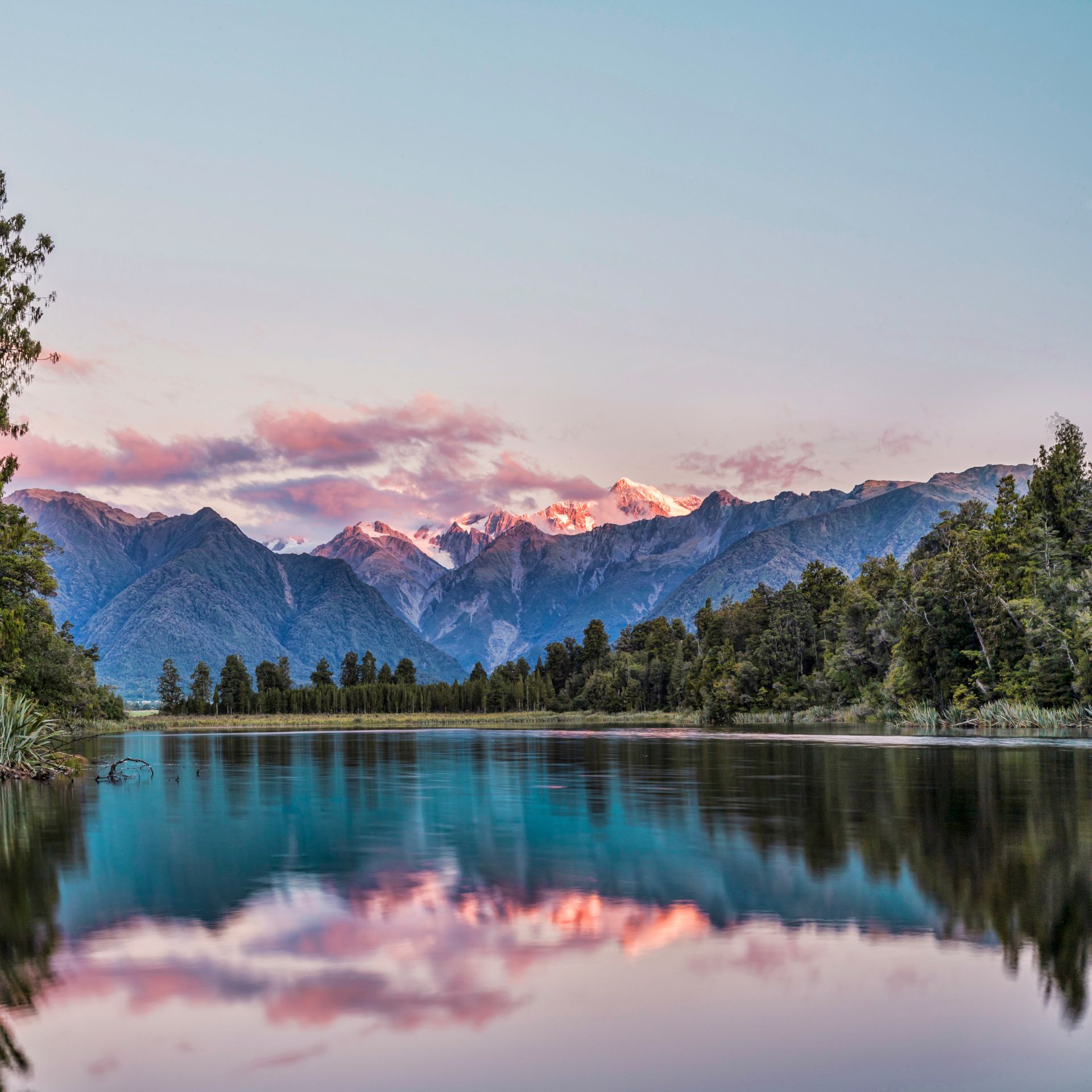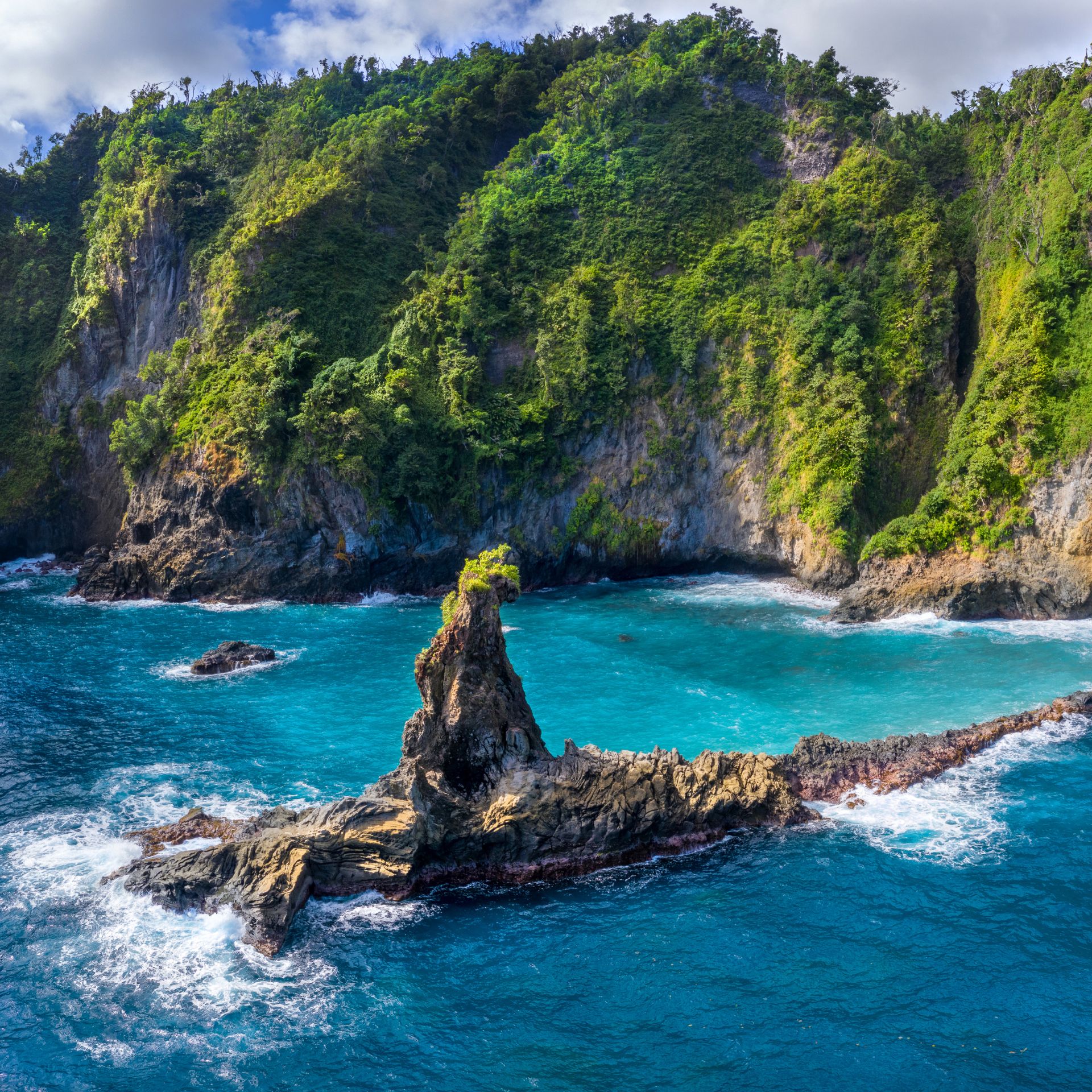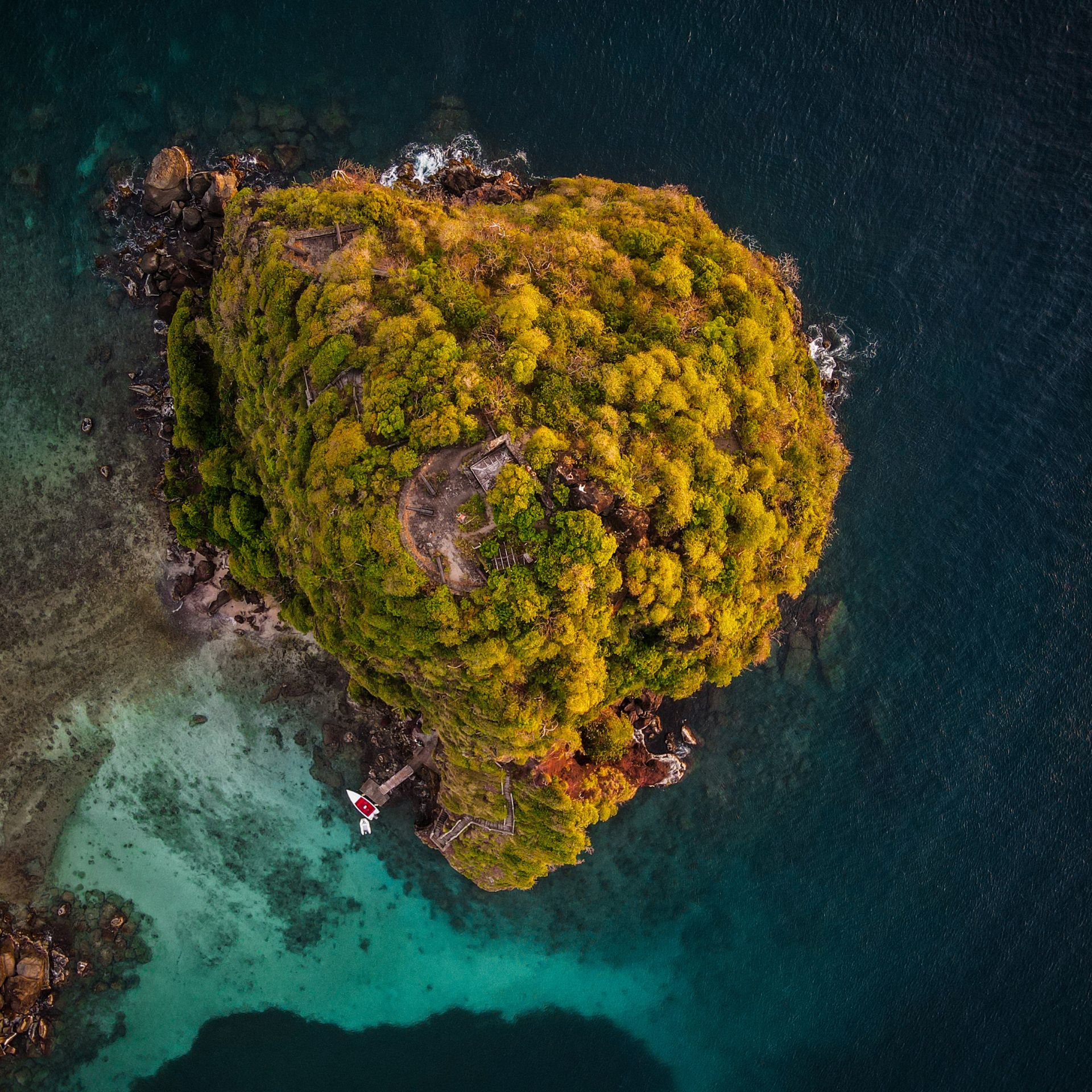Navigating Venezuela’s travel landscape can be challenging, but with the right knowledge, you can explore this beautiful country like a pro
Venezuela felt a bit odd for me. I knew I was in a new country, but the heat, the music, the people, and the vibes were like I was in Colombia. Venezuela feels like the Colombia I grew up in—the one from the ’90s when tourism was nonexistent, and the infrastructure was limited. Still, no matter how complicated the situation felt, everyone I crossed welcomed me with a smile.
Unfortunately, due to the full isolation of Venezuela in the past few years, finding the latest information on how to get around can be tricky. Most information online is quite outdated and it required me to search and search for hours to properly understand which routes, buses and options I was able to take.
This guide aims to help you navigate the complexities and make your travel experience smoother. Even though the exact information about prices and timings can get outdated quite quickly, this article will help you start planning your trip to Venezuela.
Read more: How Money Works in Venezuela
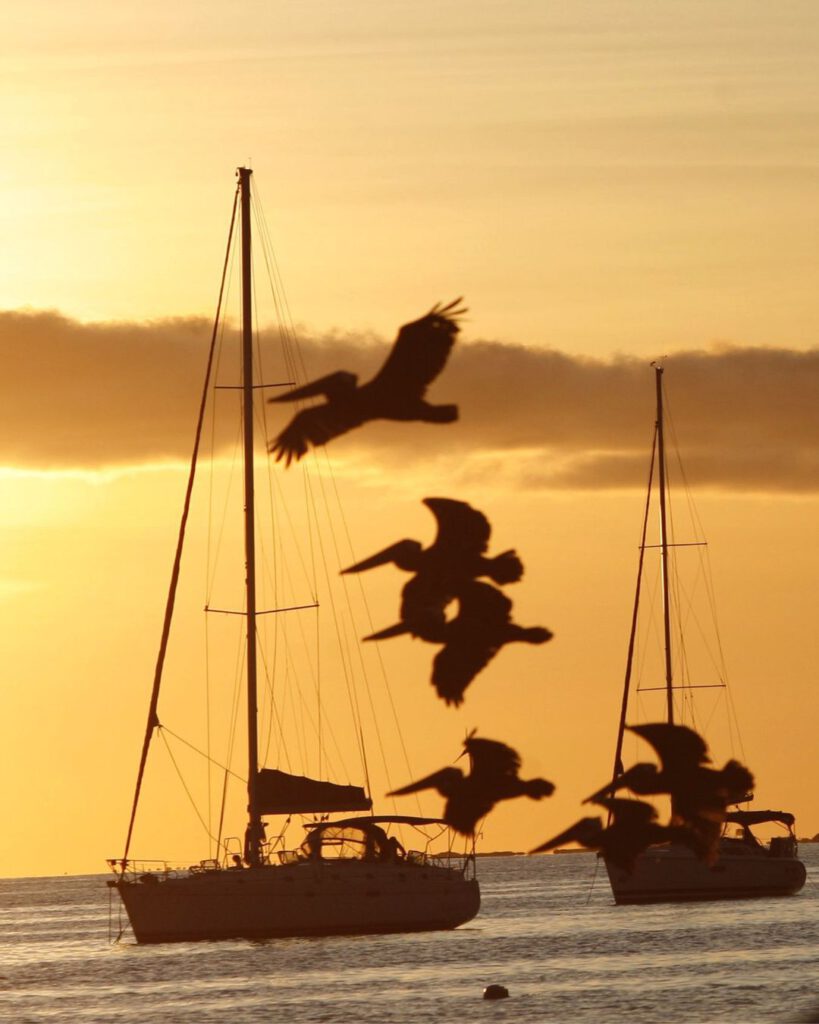
Taking National Flights Around Venezuela
Flying remains the most efficient way to traverse the vast distances between Venezuela’s key tourist spots. Caracas, Canaima, Los Roques, and Mérida are popular destinations among travelers. All of them, far away for those who hate long bus rides or a very simple infrastructure.
Airlines Operating in Venezuela
Even though there is not a big airline operating inside Venezuela, several national airlines operate within the country, offering flights to various destinations. These include:
- Conviasa
- Routes:
- Caracas to Canaima
- Caracas to Los Roques
- Caracas to Puerto Ordaz
- Routes:
- Laser Airlines
- Routes:
- Caracas to Mérida
- Caracas to Maracaibo
- Caracas to Barcelona
- Routes:
- Avior Airlines
- Routes:
- Caracas to Barcelona
- Caracas to Valencia
- Caracas to Porlamar
- Routes:
- Rutaca Airlines
- Routes:
- Caracas to Ciudad Bolívar
- Caracas to Barquisimeto
- Caracas to Puerto Ordaz
- Routes:
Keep in Mind: When booking flights, some websites might decline international credit cards. Local tour operators can make these bookings for a small fee. I recommend trying Visa and MasterCard first. In my case, it worked for three out of four flights.
A friend told me the blocking of cards only happens with Conviasa, as this airline is banned by the US and the EU. However, I can’t confirm or deny this information.
The flights themselves offer basic service with a small snack provided. Prices vary depending on the route and time of booking. Here’s an average cost for some top destinations:
- Caracas to Canaima: $150 – $200 USD (€135 – €180)
- Caracas to Los Roques: $200 – $250 USD (€180 – €225)
- Caracas to Mérida: $100 – $150 USD (€90 – €135)
While flying can be relatively costly, it saves a significant amount of time and can be more comfortable than long overland journeys.
For those flying to Canaima (Angel Falls), the flight schedule is tighter and you should reconfirm everything with the operator taking you to the Angel Falls.
Airlines Flying to Canaima
- Conviasa: Offers flights to Canaima from Caracas.
- Aerotuy: Provides flights to Canaima from Caracas.
- Rutaca Airlines: Offers flights to Canaima from Ciudad Bolívar.
Read more: Pico Bolívar in Venezuela – The First Glacier of South America to Disappear
Read more: How to Get a Visa to Venezuela as an American
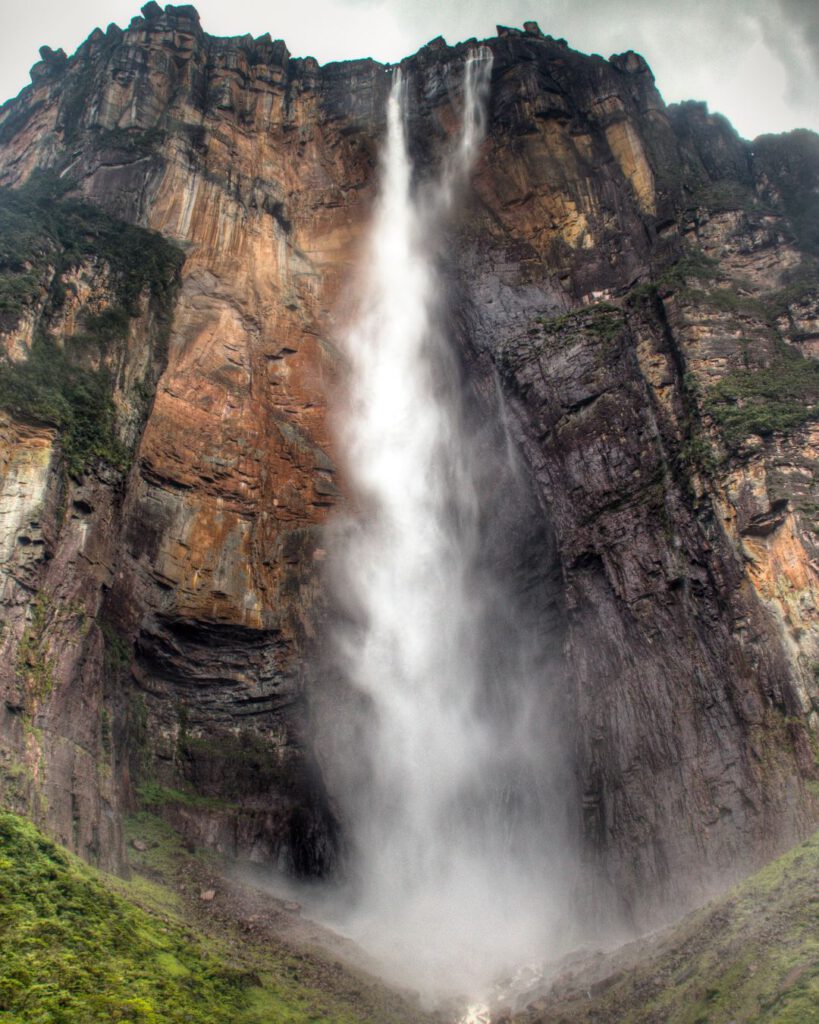
Traveling Overland with Public Buses
For those who prefer to travel by land, public buses are an option. These buses are very simple and rustic, so don’t expect the luxurious service you would get in other countries of South America. This felt like the long bus rides I used to do with my dad in the 90s, where music is loud, the AC does not work and you won’t be able to sleep. Various companies operate across different routes, connecting major cities and regions.
Bus Companies and Routes
Several bus companies serve Venezuela, including:
- Expresos Los Llanos
- Routes:
- Caracas to Mérida: Takes about 12-14 hours, costs around $30 – $40 USD (€27 – €36).
- Caracas to Barinas: Takes about 10-12 hours, costs around $25 – $35 USD (€22 – €32).
- Caracas to San Cristóbal: Takes about 14-16 hours, costs around $35 – $45 USD (€32 – €41).
- Routes:
- Expresos Occidente
- Routes:
- Caracas to Maracaibo: Takes about 10-12 hours, costs around $30 – $40 USD (€27 – €36).
- Caracas to Barquisimeto: Takes about 6-8 hours, costs around $20 – $30 USD (€18 – €27).
- Caracas to Valencia: Takes about 4-6 hours, costs around $15 – $20 USD (€14 – €18).
- Routes:
- Rodovias de Venezuela
- Routes:
- Caracas to Valencia: Takes about 4-6 hours, costs around $15 – $20 USD (€14 – €18).
- Caracas to Ciudad Bolívar: Takes about 10-12 hours, costs around $30 – $40 USD (€27 – €36).
- Caracas to Puerto La Cruz: Takes about 6-8 hours, costs around $20 – $30 USD (€18 – €27).
- Routes:
NOTE: Caracas has several bus stations, the main ones being Terminal La Bandera and Terminal de Oriente. The quality of service can vary significantly. Buses range from basic to reasonably comfortable, but it’s wise to prepare for long travel times and potentially variable conditions.
Read more: Venezuela’s Little Germany, Colonia Tovar
Read more: Everything You Need to Know About a Safari in Venezuela
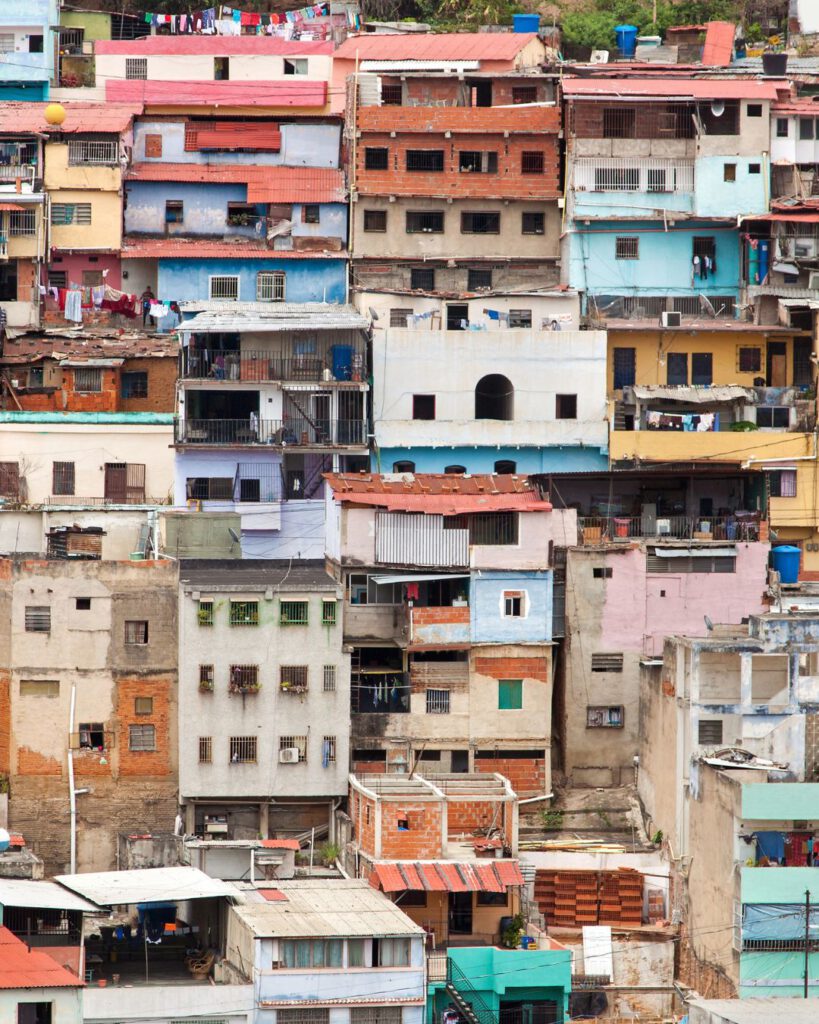
Taxis and Ride Hailing Apps
In cities, taxis and ride-hailing apps provide a convenient way to get around. However, like in many places, tourists or those with limited Spanish skills might face higher charges.
Ride-Hailing Apps
Fortunately, ride-hailing apps work efficiently in Venezuela. I used Yummy (Yummy) throughout my trip and had a great experience. The app operates in major cities such as Caracas, Valencia, and Maracaibo. Prices were fair, and I always felt safe and comfortable using this service.
Another app, Ridery (Ridery), also operates in these cities and offers a similar level of service. These apps are lifesavers, especially if you prefer not to negotiate fares or worry about overcharging.
Internet in Venezuela
To make the most of these apps, having reliable internet is crucial. I got a SIM card with Digitel, which provided 12 GB for $23 USD (€20). This option allowed me to book taxis and stay connected throughout my trip.
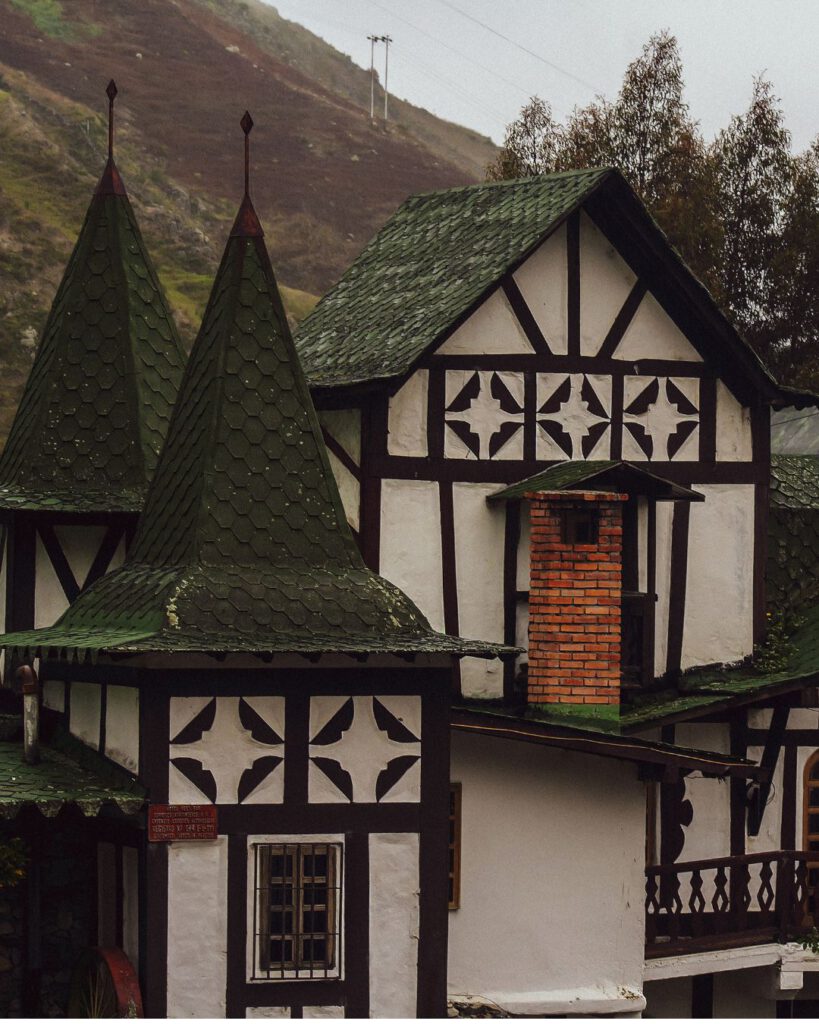
Private Rides and Car Transfers
Many Venezuelans offer private car transfers, seeing it as a good way to earn extra money. With cheap petrol and relatively low overhead costs, this can be a practical option for travelers.
Most private drivers speak little to no English, but they are generally honest and eager to earn extra income. At the airport and in most hotels, someone usually knows a reliable driver. You can negotiate a rate for the day or plan specific trips.
This option is more expensive but provides the comfort and flexibility that public transport might lack. During my trip, I got I touch with a driver from Yummy I felt comfortable with and for two days and covered over 500 km. It was convenient, and I could customize my itinerary as needed.
I paid 500 USD for him to take me from Merida to Hato el Cedral in Los Llanos and 2 days later return me to Merida.
NOTE: For those trying to connect Colombia and Venezuela, my driver in Merida does the transfer from Cucuta, Colombia to Merida, Venezuela for 130 USD. Contact me on Instagram and I can forward you his information. I don’t want to share the private number of a person on WhatsApp.
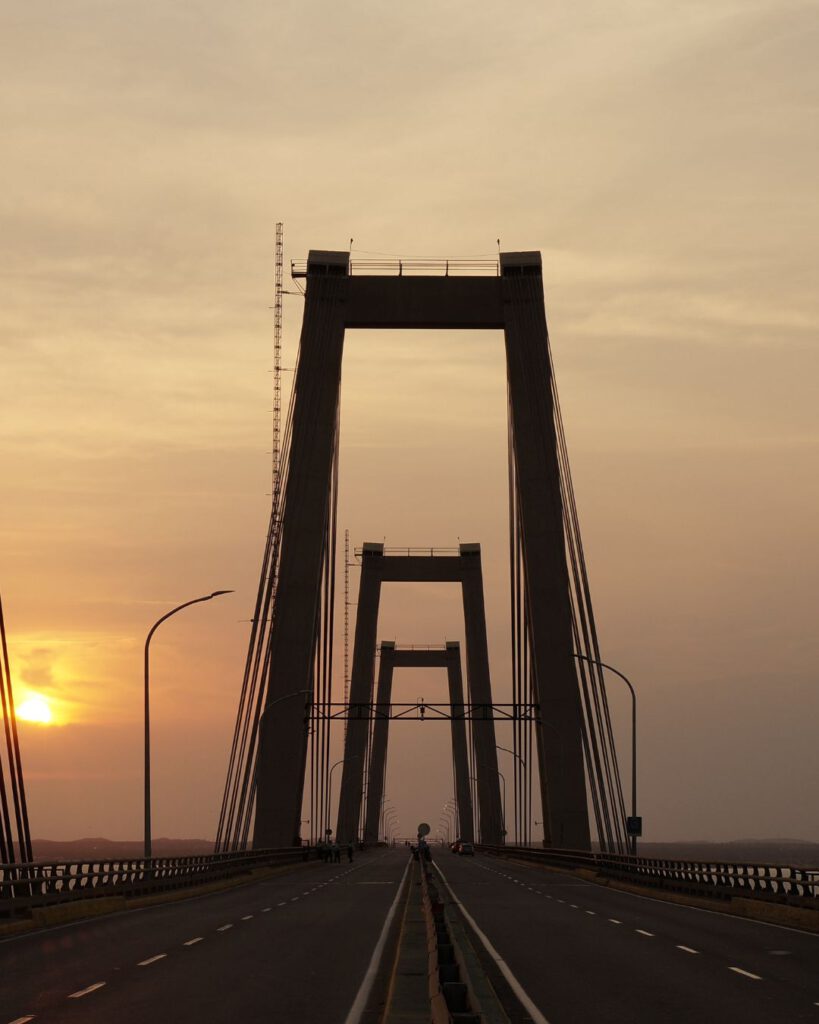
Renting a Car
Renting a car in Venezuela is possible for foreigners, regardless of nationality. However, it’s more limited and expensive compared to other countries.
Car rental services are only available in major cities. No international companies operate here (except Hertz), so you’ll have to rely on local options. In Caracas, several companies provide rental services:
- Hertz (only available at the airport of Caracas)
- Aco Rent a Car
- Villas Rent a Car
In Mérida, Leo’s Cars (Leo’s Cars) is the only company available, with a limited range of only 30-40 km outside the city. Prices start at $80 USD (€70) per day, plus an additional $20 USD (€18) for cleaning the car at the end.
Gasoline in Venezuela
One significant challenge is getting gasoline. Fuel shortages can make it difficult to fill up, so plan accordingly. I simply delivered the car back without recharging fuel and paid 50 cents per liter.
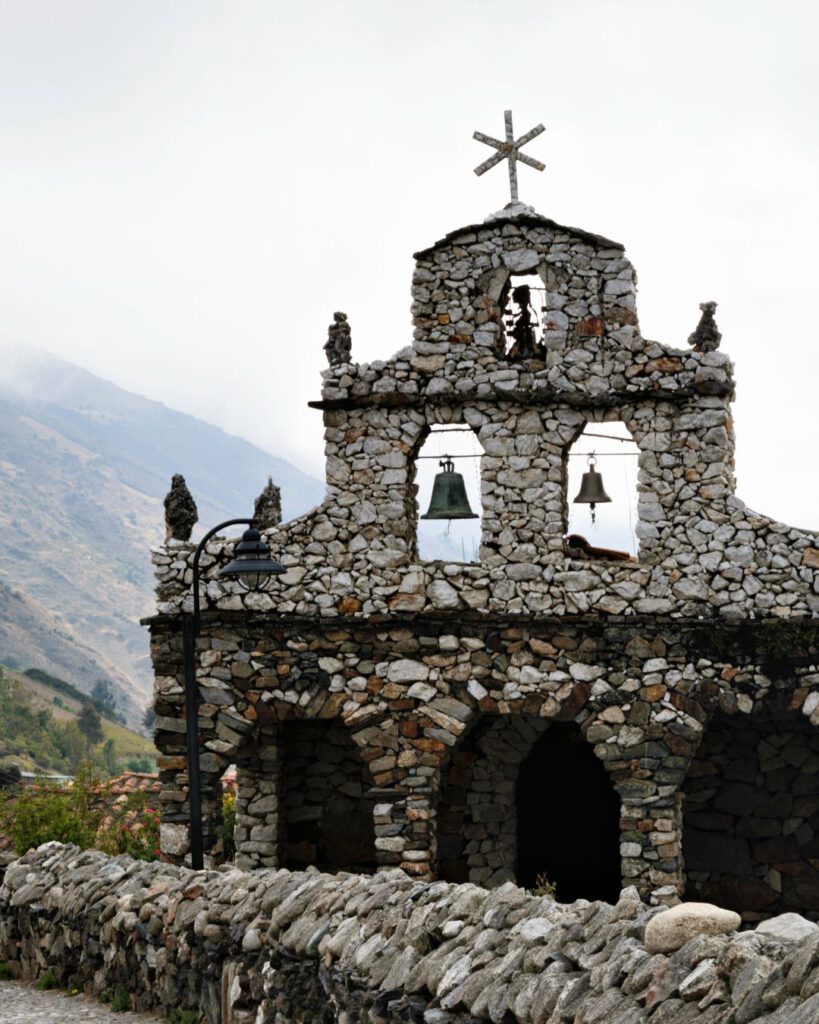
Planning Your Route
When planning your route, consider Venezuela’s geography and travel infrastructure. Here are three suggested routes:
Route 1: Caracas and Its Surroundings
This circular route lets you experience a variety of landscapes and attractions starting and ending in Caracas.
- Caracas: Begin your journey in the capital city. Explore cultural landmarks like Plaza Bolívar and El Hatillo.
- Beaches Nearby Caracas: Visit Playa El Yaque and Playa Caracolito for some sun and surf.
- Colonia Tovar: A quaint German-style village in the mountains, perfect for a day trip.
- Northern Coast Beaches: Take a bus to the beaches along the northern coast, such as Playa Colorada and Playa Medina.
This route covers approximately 500 km and requires about 7-10 days to fully enjoy.
Route 2: Hopping from Hot Spot to Hot Spot
This route focuses on flying between Venezuela’s most famous tourist destinations.
- Caracas to Los Roques: Take a flight to this stunning archipelago and enjoy pristine beaches and water activities.
- Los Roques to Mérida: Fly to the Andean city for outdoor adventures like paragliding and hiking.
- Mérida to Canaima: Head to Canaima National Park to witness the majestic Angel Falls.
This route is ideal for 10-14 days, providing diverse experiences from beaches to mountains to jungles.
Route 3: Explore the Andes and the Cowboy Life
For those looking to delve into the country’s cultural and natural diversity.
- Caracas to Mérida: Fly to Mérida, a gateway to the Andes. Rent a car to explore nearby villages like Jají and Mucuchíes.
- Mérida to Barinas: Take a taxi to Barinas, the starting point for Los Llanos.
- Barinas to El Hato Cedral: Experience the cowboy life and wildlife in Los Llanos.
- Barinas to Caracas: Fly back to Caracas from Barinas.
This route can be completed in about 12-15 days, offering a mix of adventure and cultural exploration.
Read more: How good is the internet in Venezuela
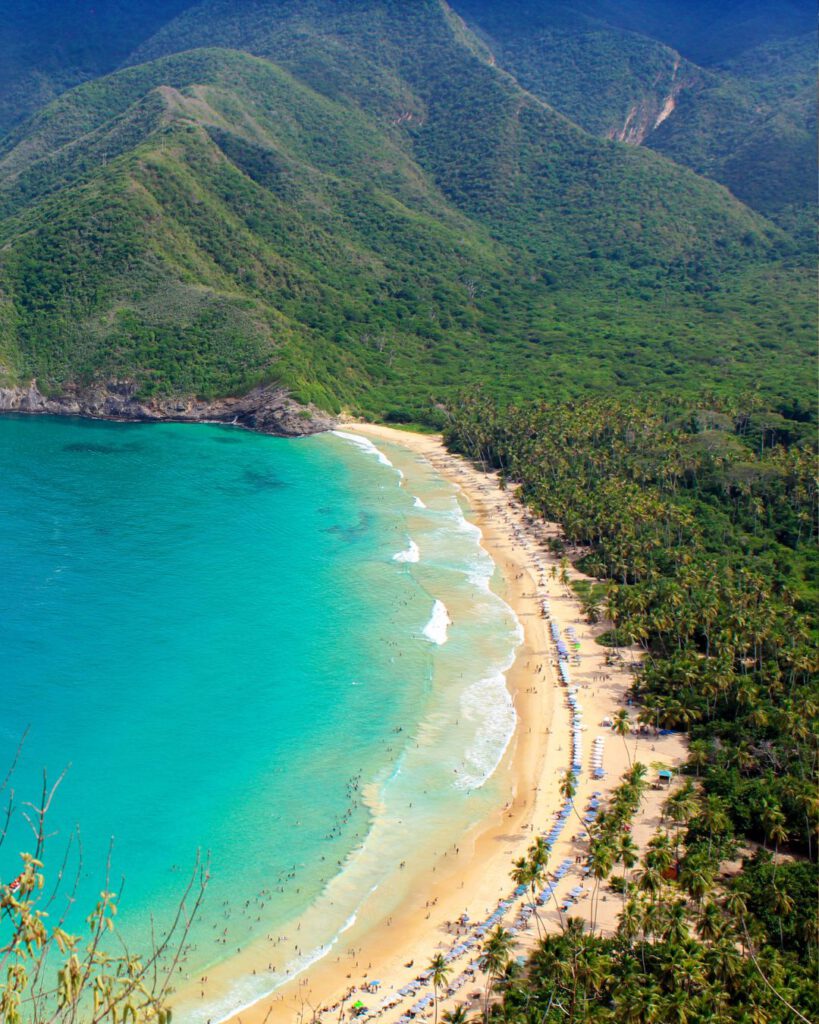
Best Places to Visit in Venezuela
Caracas Region
- El Ávila National Park: Hike or take the cable car for stunning city views.
- Caracas City: Explore the heart of the city’s historical and political life. Check out cool areas like Chacao and take the funicular.
- Los Roques Archipelago: Take a short flight to this beautiful island group.
Mérida
- Mérida Cable Car: Ride the world’s highest and longest cable car.
- Pico Bolívar: Trek to the highest peak in Venezuela.
- Los Aleros: Visit this traditional Andean village and cultural park.
Los Roques Archipelago
- Scuba Diving: Dive into crystal-clear waters teeming with marine life.
- Kite Surfing: Enjoy one of the best spots for kite surfing in the Caribbean.
- Island Hopping: Explore the various islands and cays.
Merida
- Sierra Nevada: Take the funicular to Sierra Nevada (40 USD)
- Sierra Nevada National Park: Rent a car and explore the nice hiking paths at Sierra Nevada National Park. If you take the funicular, you need a guide.
- Paramo la Culata National Park: Explore this very unique national park and do one of the many hikes they offer.
Ciudad Bolívar
- Historic Center: Wander through the colonial streets of this UNESCO World Heritage site.
- Orinoco River: Take a boat tour along Venezuela’s largest river.
- Jesús Soto Museum of Modern Art: Visit this museum dedicated to the works of Jesús Rafael Soto.
To be honest, the best, cheapest, and most efficient way to travel in Venezuela right now is with a local friend. It’s the unfortunate reality due to the current state of the country’s infrastructure and economy. Still, there are options to move around without booking a full package tour. With the right knowledge and a bit of savvy planning, you can navigate this beautiful and diverse country independently.



